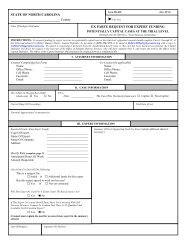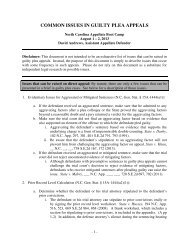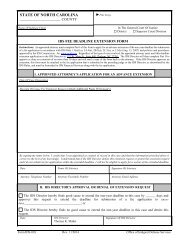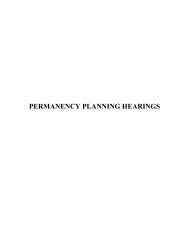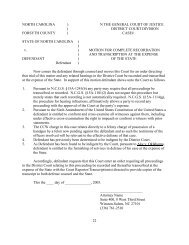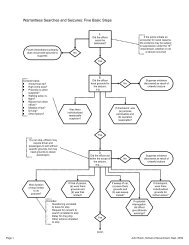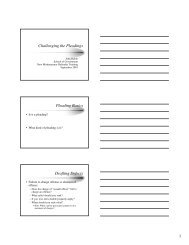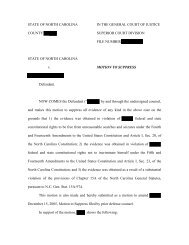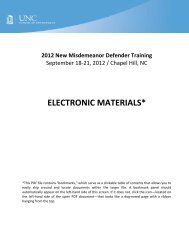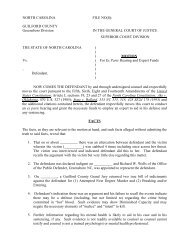a Ten-Step Guide to CLOSING ARGUMENT
a Ten-Step Guide to CLOSING ARGUMENT
a Ten-Step Guide to CLOSING ARGUMENT
- No tags were found...
You also want an ePaper? Increase the reach of your titles
YUMPU automatically turns print PDFs into web optimized ePapers that Google loves.
file:///H|/PUBLIC/Defender Training/Trial School/2006/Materials/15 Closing Argument -- Kelly.htm4. Quotations -- Not only are quotations a much more succinct and powerful way of making the pointwe want <strong>to</strong> make, they also invoke the imprimatur of the wisdom of the ages upon the actions of yourclient.Ex: Where your client remained at the scene until police arrived, you may want <strong>to</strong> invoke the wisdom ofthe Proverbs: "The wicked flee when no man pursueth, but the righteous stand, bold as a lion.." Or ifyou want <strong>to</strong> highlight how a witness has been caught in his own lies, there is always Sir Walter Scott'swonderful quote, "Oh, what tangled webs we weave when first we practice <strong>to</strong> deceive."TIPS: When using a quotation in your argument, play with placing the emphasis upon different wordswithin the quote <strong>to</strong> vary the meaning and power. In the Proverbs quote above, I had always placed theemphasis on the word "righteous" and was surprised at how much more powerful the quote became formy case simply by shifting the emphasis <strong>to</strong> the action of my client!5. Analogies -- As with metaphors, it is sometimes easier for us <strong>to</strong> understand a situation if we cananalogize it <strong>to</strong> an experience or s<strong>to</strong>ry that is familiar <strong>to</strong> us. This is true for jurors as well. Fairy tales,children's s<strong>to</strong>ries, or everyday experiences can all be valuable <strong>to</strong>ols for analogy in a closing argument.Caveats:(a) Make it succinct. Analogies are no<strong>to</strong>rious for running rampant and swallowing up large chunks ofargument time while your jury fidgets and wishes you would get <strong>to</strong> the point!(b) Only use an analogy if it is unquestionably and directly on point <strong>to</strong> a significant issue of your case.Analogies are <strong>to</strong>o time-consuming <strong>to</strong> waste on an insignificant point; nor do you want <strong>to</strong> get boggeddown in a side battle over whether your analogy fits the point you're trying <strong>to</strong> make. (Such battles can beloud and painful if the prosecu<strong>to</strong>r chooses <strong>to</strong> ram it down your throat during rebuttal, or silent and secretwithin a juror's own mind. Either is deadly <strong>to</strong> your case.)file:///H|/PUBLIC/Defender Training/Trial School/2006/Materials/15 Closing Argument -- Kelly.htm (7 of 13)6/28/2006 12:35:33 PM




